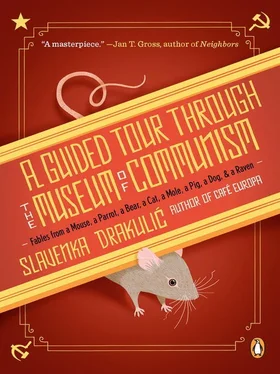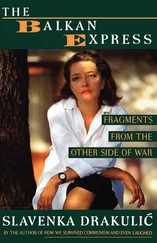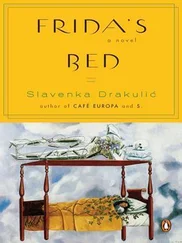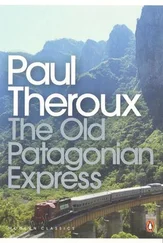Before I tell you more about this cookbook, let me focus for a moment on the political aspect of goulash—that is, on the Hungarian political stew called goulash communism. After all, I was a professor of political science, and it is of the utmost importance to me to clarify the difference between two very similar words: goulash and gulag. Don’t be puzzled because I mention the gulag in connection with goulash. Both have to do with socialism, and I can’t hide either my past or the time when my homeland was a Socialist republic and part of the Soviet bloc. That also goes for the Soviet kind of repression. As Hungary and the USSR were not only neighbors but also, so to speak, comrades in Communism for almost five decades, it is only logical that I should feel that there is a certain danger of confusing the two words.
It is not just because they sound similar and could confuse ears not accustomed to such nuances. No, the distinction is even more important because today’s reader might not be aware that gulag, as opposed to goulash, has nothing to do with food at all! Also, when you think about it, these two words are among the very few words from our part of the world that have succeeded. But the fact that someone might confuse them is not only bothersome, it is offensive to me. Because one stands for something good and the other for something horrible.
GULAG is in fact an acronym for the administration of what officially was called “corrective labor camps” in the USSR between the thirties and midfifties of the last century. Incidentally, it seems that in the USSR and other Socialist states, party and state apparatchiks loved acronyms, like RSDLP(b), CPSU, CPC, KMT, NKVD, GOELRO—our own AVH, SWP, NEM plan, and so on.
But they often hid a terrible reality—as in the case of gulags. In these camps, mostly situated in the frozen tundra of Siberia, inmates died like flies because, looking at it from my perspective, there was no goulash to eat there. Or hardly anything else, for that matter! Indeed, in a very general way, and only for the purpose of this cookbook, the gulag could be defined as a place characterized by its scarcity of food. Inmates, fed on the meager rations of kasha (a kind of porridge), ate rats and dogs and God knows what else—they even killed each other for a portion of food. Many of them ended up in camps for committing ridiculous “crimes” like petty theft, telling what were considered antigovernment jokes, or holding political views revealed to be “counterrevolutionary.” A very wide definition of “enemy,” based on the principle “he who is not for us is against us,” was used to sentence them to the gulag. Innocent people were forced to live together with real criminals and murderers. Perhaps even twenty million passed through these camps, and millions perished. With the passage of time, the acronym GULAG became gulas; that is, a noun symbolizing the repressive Soviet system itself. With this transformation it also became a dangerous word. Those who knew about it had to pretend that they didn’t.
I remember very well the first time I heard the word. It was in the eighties, when I read the novel One Day in the Life of Ivan Denisovich , by the dissident Soviet writer Aleksandr Solzhenitsyn, who himself had been an inmate for eight years. His novel tells about just that, a day in a camp, how these inmates lived in dirt, were eaten by lice, dressed in rags, and fought for the little food there was. The meaninglessness of that life seemed the hardest thing to put up with. Therefore, at the end of a day Ivan Denisovich was pleased, because he had worked hard and well. This was the first book I had read that described the gulag system and how it was used as an instrument of mental repression.
Later on, I read more of Solzhenitsyn, whose book The Gulag Archipelago made the gulags known throughout the world. I read Varam Shalamov’s memoir Kolyma Tales , as well as Eugenia Ginsburg’s Journey into the Whirlwind , and then Within the Whirlwind , and many more. My generation of pigs at Eötvös University was fascinated by these accounts. But one book of memoirs stuck with me, perhaps because I discovered that my father kept it hidden in his desk. It was Karlo Stajner’s Seven Thousand Days in Siberia . Sentenced for his “antirevolutionary activities,” Karlo Stajner spent twenty years of his life in camps. In his introduction to the English edition, the well-known then Yugoslav writer Danilo Kiš describes a meeting with Stajner and his wife, Sonja, who had waited for him to come back for all those years and to whom he later dedicated his memoir. In one single but tremendously powerful sentence, Kiš describes Sonja’s eyes: ”[T]hey are not like the eyes of the blind, not blind eyes, but eyes that no writer has ever described and few people have seen, dead eyes in a living face.” Stajner was a victim—but so was she; this sentence made me never forget what the gulag had done to Sonja’s eyes.
If the gulag stands for the Soviet kind of repression, in Hungary during the late sixties a set of economic changes turned the totalitarian system in another direction, toward goulash communism.
It is hard to understand any of these changes without mentioning Stalin—even if a history book, rather than a cookbook, offers perhaps a more appropriate place to learn about Joseph Vissarionovich Dzhugashvili. By removing everyone who stood in his way to ultimate power in the early thirties, he rose to the position of a Communist dictator whose nom de plume, Stalin, was given to this specific type of Socialist government—not only in the USSR. But to simplify the explanation, the reader should imagine Stalin as a kind of Darth Vader, the lord of the “dark force.” On the other hand, his army did defeat Hitler. The experience of living under socialism teaches us that political leaders are neither heroes nor villains—but sometimes even both. And to go back to the Star Wars movie metaphor I just used, Luke Skywalker came very late to the USSR, only in the late eighties. He appeared under the name Mikhail Gorbachev, and he was not a hero from the start either, just a party bureaucrat, but that is another story.
The so-called goulash communism started when János Kádar, the general secretary of the Hungarian Socialist Worker’s Party—who remained in office for more than thirty years—introduced his New Economic Mechanism, or NEM, in 1968. Not that he was such a good guy—he himself had skeletons in his closet; for instance, mass arrests right after the revolution in 1956. First students rebelled against the Stalinist type of government. When the police shot at them, the uprising spread throughout the country, and the government fell. But then the Soviets decided to step in, and the Soviet army invaded the country on November fourth. The revolution, which lasted only a few weeks, was crushed at the price of thousands upon thousands of civilians killed. A new, pro-Soviet government was installed, with János Kádar as prime minister. As Americans would say: There is no such thing as a free lunch! So Kádar ordered (or, better said, was ordered to order) the persecution of some 26,000 rebels, of whom 13,000 were imprisoned and several hundred even executed. Some 200,000 people fled the country.
On the other hand, he knew that the whole of Soviet-style socialism was hated, and he needed to introduce compromises in order to keep socialism going. And Hungarians knew that Kádar knew, and he knew that they knew that he knew.
When he introduced the new economic plan, Kádar was confronted with the same question of ingredients: How far could one go in introducing various additions and changes—and still call it socialism? His unorthodox mixture of ingredients from both the planned and the market economies made our bellies full, our newspapers more liberal, our piggish rights more respected. Our life improved. Obviously, he decided that it was better to offer a meager goulash—with somewhat unconventional ingredients—than the gulag. The main principle of goulash communism became, to quote him: “He who is not against us is for us . ” Instead of weeding out “counterrevolutionary” elements, Kádar sort of dumped them into his stew, which only made it thicker. It worked in the same way as when a cook adds some flour to the sauce: “With us” functioned just like that, like a cohesive element in the society, a glue of sorts. Out came a bearable, edible stew based on compromise—a golden cage of a sort.
Читать дальше












